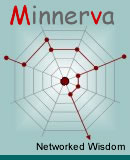|
Household Surveys are
complex to organise and expensive to run - obtaining best value
from them is a priority. This means that the survey manager needs
to be in control of the process and to have some immediate feedback
on both the quality and content of the data being returned so that
corrective actions can be taken to reduce the possibilities of bias
entering the data. Depending on the nature of the survey and the
way in which the sample might have been stratified, the potential
for bias exists with:
• Day of week the interview
takes place
• Response rates by geographical area
• Interviewer performance
Interviewer performance
is particularly relevant. Not only might some interviewers be better
or worse at obtaining the interview in the first instance, it might
be that there are inconsistencies between interviewers in how they
have interpreted the nature of the survey and the way in which questions
are asked. In the context of a travel survey we might want to monitor
the average number of trips per household recorded by each interviewer
to see if there are extremes being recorded. This lets the Survey
Manager investigate how Interviewers who might be at the extremes
are conducting their interviews.
HSMIS is a tool that brings together the sample and the interviewers.
The Survey Manager can then:
• Allocate work to interviewers
and issue them with work sheets
• Log interviewer’s returned work back into the system
• Monitor and analyse field progress
• Monitor and analyse progress by interviewer
Together with a range
of additional features and tools, HSMIS increases the productivity
and control of the Survey Manager, all of which contributes to higher
confidence in the data being collected. The HSMIS
database can be linked with GIS providing a visual understanding
of the sample location. Sample addresses can be issued to the Interviewers
through this medium, enhancing the dialogue between interviewer
and the Survey Office.
(Contact: Martin Bach)
|

